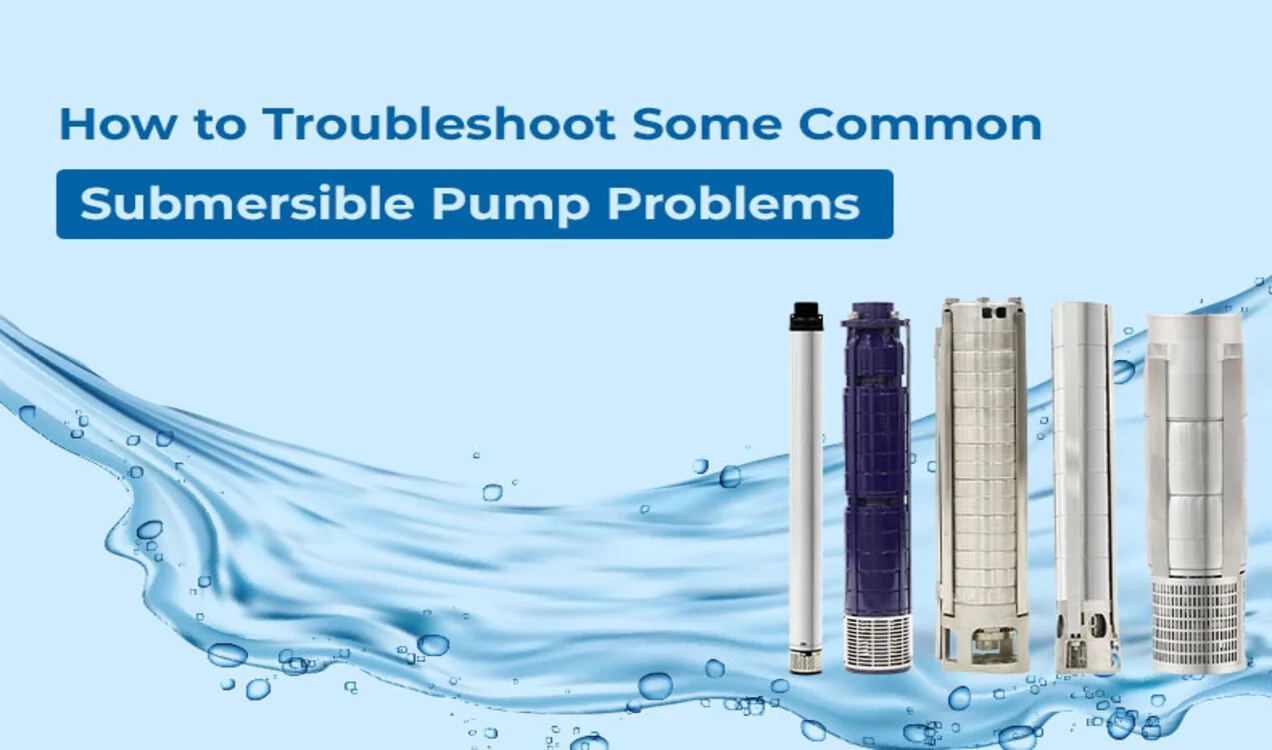A submersible pump is made of numerous components and it is installed with numerous other additional components. The seamless performance of the pump depends upon the proper functioning of all primary and additional components. The following tips of troubleshooting may come to your aid if a submersible pump suddenly malfunctions or stops functioning.
Common Problems and Their Solutions:
1. Changes in Temperature
The overheating of a submersible pump indicates the presence of an underlying problem. A defective motor may be responsible for this problem. However, the overheating may result from another underlying condition which causes other issues alongside raising a pump’s temperature. The fluctuations in pump’s temperature may even result from
- Incorrect installation
- Foreign material deposition outside the motor
- High/low voltages
- Rise in temperature of ambient water
A submersible pump may stop functioning if any of the aforementioned issues are not quickly resolved. The water or any other cooler fluid will start boiling due to overheating and will generate steam. The steam will put pressure on the insulation causing ruptures or breakdown. You can prevent overheating by using quality materials that last for years and provide reliable service. It is equally important to ensure that each component fits properly.
2. The Motor Won’t Start
- A pump’s motor may stop functioning due to a tripped circuit-breaker or blown fuse. You can resolve this issue by installing a new fuse or resetting the circuit breaker.
- The corroded or dirty fuse receptacles may cause the same problem. However, a motor stops functioning intermittently in this scenario. You can resolve this issue by installing a new fuse receptacle.
- The deposition of debris or corrosion at the contact points for a pump’s pressure switch causes voltage fluctuations and leads to malfunctioning of the motor. The motor may even stop working. This issue can be resolved by removal of debris or corrosion.
- The collection of sand or other elements surrounding the pump may prevent it from functioning properly. The amp readings may increase up to six times higher than the normal reading in this scenario. The motor starts running once the build-up is removed.
3. Voltage Unbalance
The incorrect sizing of the drop-cables will cause voltage imbalance. It may even result from the unequal transmission of the voltage to each winding. This results in overheating of the motor and decreases a motor’s life leading to critical failure. You can avoid this issue by;
- Using a properly sized cable.
- Using a motor which has been designed to operate with a higher resistance level. This type of configuration requires smaller drop cables with less requirement of full load current.
4. Reduction in Supply Line diameter
Every submersible pump is designed to operate with an input line of specified diameter. However, some users attach a hose or line smaller than the recommended diameter using reduction couplings. The intake line may become crimped in this scenario. It may even become crimped on its own. You can avoid this problem by following these tips.
- Use an intake line of the specified size and ensure that the size of the intake line and discharge line is equal.
- Make sure no kink is present at the intake line along its length from the source of water to the pump
- Use a rigid intake line or non-collapsible hose
5. Motor Runs Too Often or Constantly
The motor of a submersible pump may cycle frequently or may run constantly in the following scenarios.
- There is a leak in the system. You have to replace the damaged pipes that are leaking and have to check the level of water to ensure that the well-capacity of the pump is within limits.
- The pressure switch is defective. You have to examine the settings alongside cleaning the contacts to resolve the issue.
- A pump’s screen or check valve is blocked. You have to remove the blockage to resolve the issue.
6. Voltage Spike
The motor insulation of a submersible pump has been designed to handle a specified level of voltage. However, the sudden spike in voltage may result from a lightning strike or storm. It may damage the insulation and cause overheating of the motor. The lightning may even form a hole in a motor’s casing. You have to use an external surge protection to avoid this problem.
7. Improperly Connected Motor
The impeller of a water pump is supposed to move in one direction. However, a pump cannot operate properly if the impeller moves in the opposite direction. This problem may result from the incorrectly established electrical connections to the electric motor. In this scenario, you have to check the set-up of the electric motor alongside examining the user instructions. It enables you to ensure that the connections have been properly set.
8. Excessive Noise
If a submersible pump is extremely noisy, then you have to check the valves and have to ensure that the flow pattern has not changed. It may happen due to cavitation in the pump. The excess noise may be the reaction of a pump to the bubbles that are formed when the water is being transferred. The pump will lose its efficiency alongside being extremely noisy due to cavitation. In this scenario, you have to check the alignment between the pump and the driver. The basic characteristics of the water may even cause cavitation. In this scenario, it is important to adjust the pump in order to compensate for the viscosity.
A submersible pump is made of multiple parts and is installed with numerous additional components. Thus, it may malfunction at any time. It is essential to regularly check the condition of the equipment and to carry out maintenance or replace the damaged parts in a timely manner. You can resolve some of the common issues of a submersible pump using these tips. Found this Article helpful? Visit us at Unnati Pumps and find more such informative articles.


